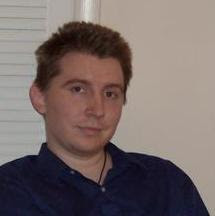The anima as for as I have experienced her, begins as an image of our own mother – at the very beginning, the instinctual looking for and loving of whoever fits the role “mother” – and everything about her falls into focus, the quiver of her lips, the walk of her hips and the brows of her doubt, her angry glare, her laughing shout: everything becomes a persona of her within us, and this is the anima for men, and I suppose the opposite for a women would be the animus of dad. We build other personas of siblings and friends, and the early models becomes “Archetypes” for later people we meet. First impressions orchestrates subsequent impressions. As the individual nears adulthood, he or she falls in love if not for the first time, for the first full-blown time, the great passionate tempestuous trying out of love – intense, questionable, violent, romantic, and almost certainly doomed to failure. Who forgets their first love? Who can fail to compare each subsequent lover to her first great love? Perhaps, finally, maybe a decade later, she will finally be able to again discover a “pure” love (one not compared to the first love) but this is merely apparent – the archetype has become completely anima. That is the great event of early adulthood: the death of the mother anima and the replacement with the lover anima: a man becomes the first love of his life, his femininity is in the image of her. At that point, he may leave her memories, forget them, laugh at the foolishness of youth, betray the lover’s memory in a dozen ways – betrayal is always apparent – and us thus rid of her control of him: he has become her.
Jung gets closer to the psychic reality her as elsewhere, and the Oedipus complex completely misses the mark, when we should speak of the Attis complex. Attis was the son and lover of Cybele (mother earth), and when he grew up and loved another woman, the jealous Cybele appeared in an ecstatic vision, drove him mad, and so he castrated himself under a pine tree, and bled to death. Grieving, Cybele resurrected him. We celebrate this event every year with the Christmas tree. Freud erred to think that we feared being castrated by the father for loving our mother when in fact, the fear is to be castrated by the mother for loving another (disappointing her), as in this myth, where her ecstatic image is a stand in for the male anima patterned after her. Jung is the apt interpreter of myths, but even he doesn’t understand the riddle of the serpant, told in the myth where the White Goddess All castrates herself into a serpant which impregnates her with the world egg. Such a mytheme seems strange to us, but in fact its meaning is readily apparent when we equate the womb with penis, yin to yang.
The macho-heroes of mythology – Hercules, Samson, Adonis, Giglamish – are tempted most by their mother anima, since because they emphasize their masculinity, they never confront the feminine within, and she works indirectly to revenge herself: Samson’s eyes are castrated and he is sent into the the mill of samsara to work as a beast, Adonis we have already mentioned, Gilgamesh successfully dodges Ishtar altogether, the profoundest of the heroes here, and Samson is done in by a jealous but naïve wife. These men seem to choose the overly feminized women in order to escape the inner feminine, and this is the source of the tension. Achilles was never so lucky, for the arrow to his ankle is merely another motif on the snake at the ankle, the snake representing mother vengeance, and the ankle the genitals, as with Oedipus swell-foot, and Jesus Christ (his cry “my father, why have you forsaken me?” isn’t direct. Who is the one at his foot who has not forsaken him, though he forsook her publicly and privately?) As for the myths of the other Mary as Lover, and the ensuing love triangle (if not love square) with Judas, I leave that the speculators. The Babylonians have a touching tradition where Tiamat (“great mother”) the horrible mother of all the gods, is torn to pieces to create the very world they live with. How is this primordial image of mother, where we determine beauty and order from her face, and love and passion from her moods, used to create the very world we live in?


No comments:
Post a Comment